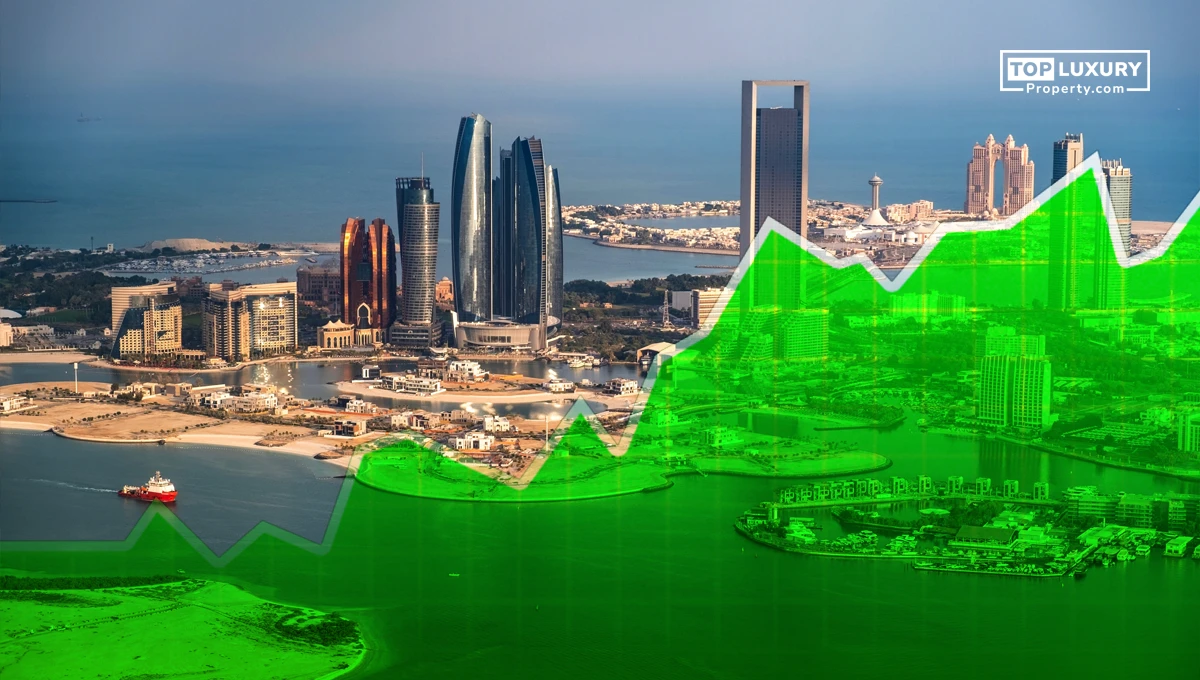Abu Dhabi Real Estate has entered a new chapter as the Emirate closed H1 2025 with impressive growth and mega infrastructure announcements. From future transport solutions to entertainment mega-projects, H1 2025 saw strong demand across secondary, ready and Abu Dhabi Off-Plan Properties sales and major announcements on government-backed mega initiatives. The market has shown remarkable resilience and growth with regional and international investors increasing their appetite for Abu Dhabi’s real estate offerings.
“We believe H1 2025 is the tipping point for Abu Dhabi,” said Riyad Magdy, Founder and Chairman, Oia Properties. “While others talk about future potential, we feel the moment has arrived. Whether it’s new global partnerships, transport infrastructure or sustainability-led communities, the vision is no longer abstract. It’s concrete, funded and under construction.”
5 Transformational Trends Reshaping Abu Dhabi’s Real Estate Future
1. Disneyland Abu Dhabi: A Catalyst for Family-Oriented Developments

The news about Disneyland Abu Dhabi, the first Disney theme park in the Middle East, is the game changer in the real estate industry of the emirate. This leisure super-project makes Abu Dhabi the most family-centred resort in the region, and scoops up the highest records of the second homes and lifestyle-focused settlements ever.
Not only does it affect tourism but has a ripple effect on residential development as well, especially in terms of family sector communities. Developers are also paying more attention to family-friendly amenities and designs, since they know that this attraction will change their demographics in the long term.
2. Revolutionary Transport: Air Taxis and Rail Reshaping Connectivity

Joby Electric Air Taxis
Electric vertical takeoff aircraft (eVTOL) technology will change regional connectivity, Joby electric air taxis will get you from Dubai to Abu Dhabi in 20 minutes by 2026. This will open up new residential corridors and change commuter behavior patterns.
The implications for real estate are huge, previously remote areas will be highly accessible, new investment opportunities and development potential across the emirate.
Etihad Rail Activation
Construction is progressing well, and Etihad Rail will soon link Abu Dhabi to the UAE’s main economic hubs. This will make outer areas more accessible and desirable, expand the residential market beyond core areas.
3. Sustainability Surge: Eco-Friendly Communities Leading the Market
Developments built around wellness, sustainability and ESG are outperforming the market. A great example is Al Fahid Island which has achieved amazing sustainability milestones as the first island in the world to get Fitwell certification and LEED Cities and Communities Platinum pre-certification.
This trend reflects investor and resident demand for eco-friendly developments, sustainability is becoming a key driver of property values and demand.
4. Luxury Branded Residences: Attracting Global High-Net-Worth Investors

Abu Dhabi Luxury Property is booming with luxury operators like Ritz-Carlton, Nobu and Six Senses entering the market. This is Abu Dhabi’s growing appeal to global Ultra High Net Worth Individuals (UHNWIs).
Branded residences offer investors:
- Guaranteed service standards and management quality
- Strong rental yield potential
- Enhanced resale value
- Access to exclusive amenities and services
5. Robust Investor Confidence: Soaring Prices and Off-Plan Sales

The market is experiencing mature growth not speculative spikes. Abu Dhabi has proven itself to be stable, secure and sophisticated, attracting serious long term investors who see the potential. Average apartment and villa rental prices will continue to rise in H2, driven by population growth and job creation across professional sectors.
Conclusion
2025 is the year Abu Dhabi’s vision meets execution. With major projects moving from planning to delivery, the emirate is set for growth driven by real economic drivers, not speculation. For investors looking for a mature, Abu Dhabi Real Estate Trends 2025 has opportunities across sectors and price points.






_(2)_638647637563832478_820465_.webp)